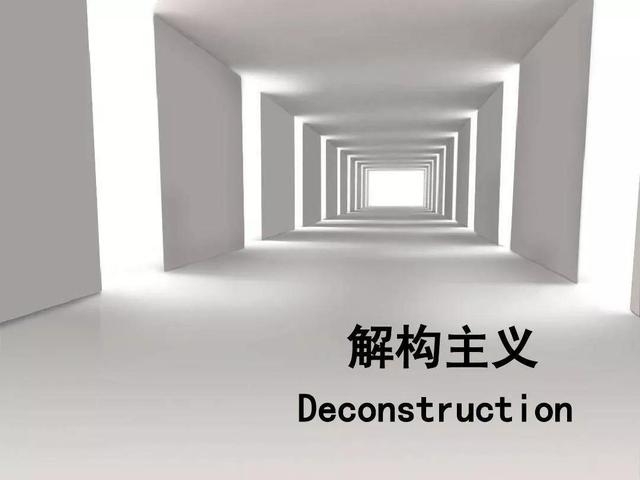摘要:这篇文章主要介绍了解构主义风格特征(解构主义简介),需要的朋友可以参考下,如果你喜欢还可以浏览解构主义风格特征(解构主义简介)的最新相关推荐信息。
Introduction to Deconstruction

解构主义于20世纪60年代起源于法国,它是哲学家雅克•德里达用于批判语言学中的结构主义而提出的理论。解构就是分解结构再进行创新和重组,实质是对结构主义的破坏与分解,它的核心思想是颠覆、破坏和反传统主义,是后现代主义的重要组成部分。
解构主义设计最早出现于建筑领域,其主要特征是把完整的现代主义、结构主义建筑整体破碎处理进行重组,形成破碎的空间和形态,具有个人性和随意性,是对正统现代主义、国际主义原则和标准的否定与批判。弗兰克•盖里是当代著名解构主义建筑师,也是“建筑界的编舞师”。
解构主义最大的特点是反中心、反权威、反二元对抗。德里达本人对建筑非常感兴趣,视建筑为控制社会沟通和交流的工具。解构主义建筑师们认为应把许多存在的现代和传统的建筑因素重新构建,利用更加宽容、自由、多元的方式来建构新的建筑理论构架。(商盟百科网chnore.com)
解构主义不但否定了现代主义的重要组成部分之一的构成主义,而且也对古典的美学原则如对称,和谐,统一 提出了挑战。但解构主义并非随心所欲的设计,尽管不少解构主义的建筑貌似凌乱,但他们仍然考虑结构因素的可能性和室内外空间功能的要求。从这个意义上来说,解构主义不过是另一种形式的构成主义。
在20世纪西方批评史上,解构主义提出的反逻各斯中心主义( anti-logocentrism)、延异( differance)、替补(supplementarity)、互文性(intertextuality)等批评理论与策略,也对现代语言文学批评有过独特的贡献。其一,它消除了长期占据人们思想头脑的逻各斯中心论,打破了等级森严的二元对立,并提出概念之间“并无等级和中心,仅有差异”的观点。其二,它发现了能指之间的互指、多义和无限延异的关系,充分认识到文本的开放性和互文性,为此它也强调了读者和批评家的重要作用。
Introduction to Deconstruction
Deconstruction originated in France in the 1960s. It was put forward by the philosopher Jacques Derrida to criticize structuralism in linguistics. Deconstruction is to decompose the structure and then innovate and reorganize it. Its essence is to destroy and decompose structuralism. Its core idea is subversion, destruction and anti traditionalism, which is an important part of post-modernism.(商盟百科网chnore.com)
Deconstruction design first appeared in the field of architecture, and its main feature is to reorganize the overall fragmentation of the complete modernism and structuralism architecture, forming a fragmented space and form. It has individuality and randomness, and is a negation and criticism of the principles and standards of orthodox modernism and internationalism. Frank Gehry is a famous contemporary deconstructionist architect and "choreographer in the architectural field".
The greatest characteristic of deconstruction is the theory of anti center, anti authority and anti dualistic confrontation . Derrida himself is very interested in architecture and regards architecture as a tool to control social communication and exchange. Deconstruction architects believe that many modern and traditional architectural factors should be reconstructed, and a new architectural theoretical framework should be constructed in a more tolerant, free and diversified way.
Deconstruction not only negates constructivism, one of the important components of modernism, but also challenges classical aesthetic principles such as symmetry, harmony and unity. However, deconstruction is not a random design. Although many deconstruction buildings seem messy, they still consider the possibility of structural factors and the requirements of indoor and outdoor space functions. In this sense, deconstruction is just another form of constructivism.
In the history of western criticism in the 20th century, the anti logocentrism, differance, complementarity, intertextuality and other critical theories and strategies proposed by deconstruction have also made unique contributions to modern language and literature criticism. First, it eliminates the Logos centrism that has occupied people's minds for a long time, breaks the hierarchical binary opposition, and puts forward the view that "there is no hierarchy and center, only difference" between concepts. Secondly, it finds the relationship of mutual reference, polysemy and infinite extension between signifiers, fully recognizes the openness and intertextuality of the text, and therefore emphasizes the important role of readers and critics.(商盟百科网chnore.com)
,解构主义风格特征(解构主义简介)










